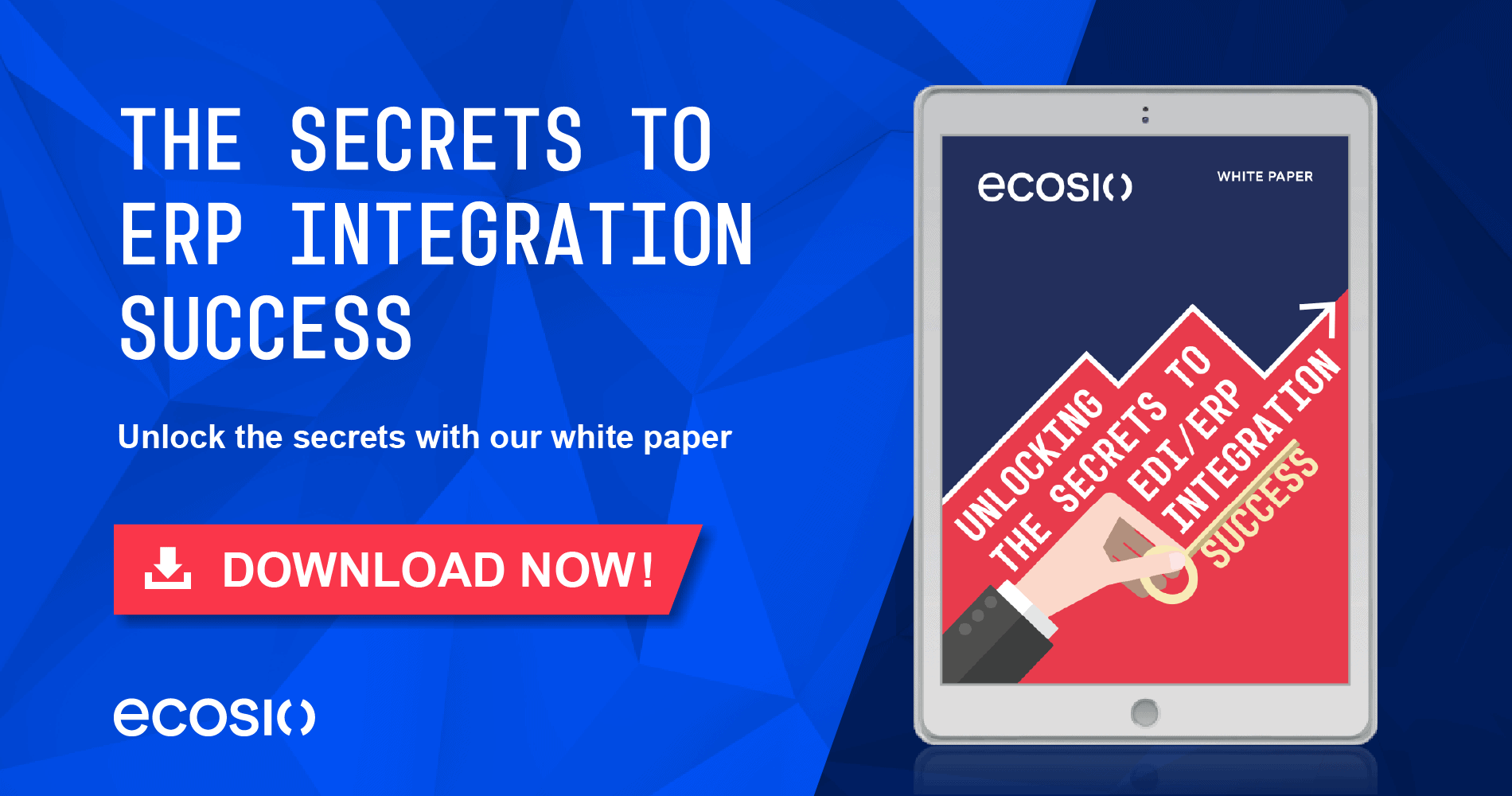Although integrating EDI capability in ERP systems (such as Infor M3, Microsoft Dynamics 365, NetSuite and SAP) is virtually essential for forward-thinking supply chain organisations, ensuring your EDI integration project is a success is no simple task. While a plethora of different EDI solutions exist, only a small percentage actually have the potential to transform the efficiency of your specific B2B integration processes. With little information out there to help decision makers to make the right choice, however, it’s no wonder that many businesses end up with ill-suited solutions.
To help those unsure of how best to approach an upcoming EDI integration project, in this article we’ll cover four key things you can do to ensure your project is a success.
1 – Consider your options
Given the far-reaching effects of B2B data exchange and the extent to which it can impact a business’s bottom line, it follows that due care should be taken to select a suitable solution. Unfortunately, as EDI capability is often sought reactively rather than as part of a long term strategy, however, many businesses fail to consider the numerous available solutions properly as part of a well-planned EDI intgration project.
A common example of such a situation might be:
A supplier is faced with an immediate request to enable the receipt of electronic purchase orders and the transmission of invoices over EDI. This customer is very important and therefore needs to be satisfied or will look for a different supplier.
The supplier tries to fulfill this need with minimal effort and in the minimum time. The decision process therefore does not involve a true internal discussion of the real needs and capabilities of internal teams such as current IT backend systems, the sales department, logistics etc.
Due to this, often the lowest bidder wins the race. Issues are not identified before the solution is purchased, resulting in more problems down the line when an ill-fitting EDI solution needs to be implemented.
As a result, EDI stakeholders are unhappy about the speed and quality of the implementation, encounter problems with its capability and ease of use and are
faced with additional charges to improve the EDI solution.
By taking the time to conduct a thorough internal requirement and capability audit, and using this information to select a suitable selection, all of the above issues can be avoided.
2 – Match your solution to available resources
Regardless of the breadth of your trading partner network, establishing, operating and maintaining a successful EDI system takes effort and expertise. Many businesses learn this the hard way, having attempted to implement and run a solution in-house and struggled to do so effectively without significant further investment.
Although on-premise EDI systems can work for those businesses that have a wealth of expertise and large IT teams, a much more sensible route for those not in this position and starting an EDI integration project is to opt for a fully managed provider that is able to greatly reduce the strain on internal resources (see our infographic for a detailed comparison of how much help EDI solution providers really offer). Whether it’s setting up new mappings for suppliers, ensuring compliance with ever-evolving e-invoicing regulations or implementing changes to existing protocols (e.g. moving from AS2 to AS4 in regard to Peppol), a fully managed EDI solution provider removes the need for considerable internal EDI resources. In turn, in-house teams are able to focus on more value-adding tasks.
Unlike on-premise solutions, fully integrated, managed solutions also offer much more flexibility. With a cloud-based system changes can be implemented quickly by the service provider, with minimum disturbance to day-to-day business operations. By selecting such a solution, businesses are therefore well positioned to deal with future changes and the potential for growth isn’t hampered by limited in-house EDI knowledge.
3 – Plan for post go-live
Many businesses focus so much on the technical aspects of the EDI integration project that they neglect to agree on important responsibilities and processes regarding the ongoing operation of the new solution.
Given the large amount of work that is required to operate and maintain on-premise EDI solutions, having efficient processes in place is particularly important for those businesses who choose to deal with EDI in-house. Unlike with managed solutions, where crucial tasks such as message monitoring, error handling and implementation of relevant updates are handled by the service provider, with on-premise solutions all of these tasks (and more) must be allocated to experienced individuals/teams.
By agreeing operational responsibilities at an early stage you will avoid potentially costly confusion later on. Moreover, early consideration of what resources are available to handle EDI tasks post-go-live may well influence your choice of solution.
4 – Don’t neglect future needs
As we have just mentioned, planning for the future is important when it comes to operational responsibilities. However, just as important is considering what your business’s future EDI needs are likely to be more generally.
Whether you have a well-defined plan for the growth of your business or not, failing to select a solution that can cope with a change in your EDI needs can prove very costly. Despite the fact that activation of new functionalities (such as exchanging via AS2) often requires little effort on the part of the EDI software vendor or EDI service provider, licensing costs can be associated with new protocols with some providers. These licensing costs add up to thousands of pounds with some solutions! With other solutions, additional protocols are included free of charge. With this in mind, it makes sense to select a flexible, modular solution that can be easily adapted to suit changing requirements at minimal expense. In particular, the solution’s extension capabilities must be precisely evaluated before a purchase decision is made and a potentially unfortunate lock-in effect has been created.
Want more information?
This article is taken from our white paper Unlocking the Secrets to Successful EDI Integration. This detailed white paper explores the development of ERP systems, how EDI fits into today’s systems, the benefits of a comprehensive and well-planned EDI integration project, and how to avoid common integration headaches.
Download your free copy of “Unlocking the Secrets to EDI / ERP Integration Success” and improve your chances of securing a solution that fulfills all your requirements whilst reducing internal effort,
Alternatively, if you have any questions about your unique situation or anything else relating to B2B integration, please do get in touch! We are always happy to help!






